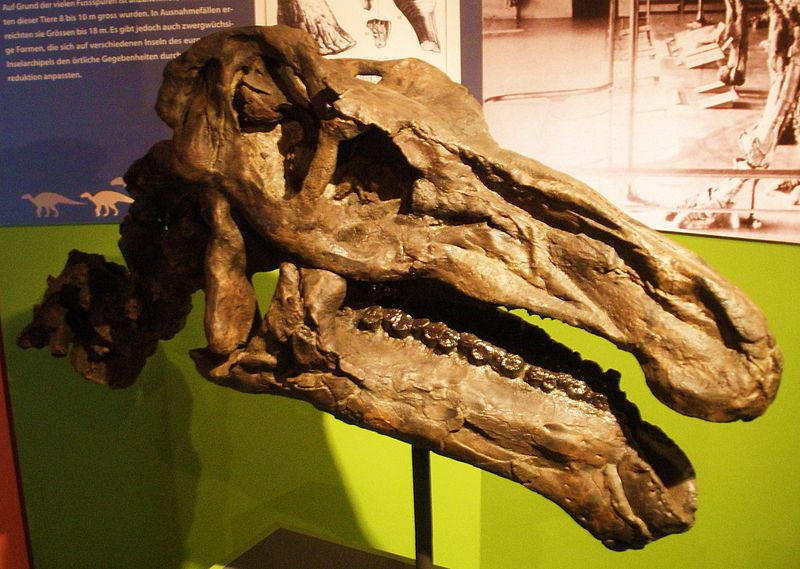What was an Iguanodon? - A Quick Guide for Kids
- Imagining History

- Apr 13, 2021
- 4 min read
Updated: Mar 27, 2025
Next up in Imagining History's introduction to Dinosaurs: Iguanodon. Let's get to it!
What does the name 'Iguanodon' mean then?

It means ‘Iguana-Tooth’. Now I’m guessing your next question will be: ‘Why oh why, in the name of Zeus’ golden earlobe, was this Dino named ‘Iguana-Tooth’? That’s because - a long, long time ago in the same Galaxy as this one – a geologist named Gideon Mantell found some massive and very ancient teeth buried in Tilgate Forest.
Gideon didn’t know it at the time but these teeth once belonged to a big ole’ Dinosaur. It took a while for this to be discovered though, because many leading experts dismissed the teeth as once belonging to a large fish or a rhinoceros. (Not an iguana? No, apparently this idea didn't occur to them until later - after all the teeth were far too large to belong to an iguana. But who knew the teeth of fish and rhinos looked so similar, ay?) Anyway, after a time everyone agreed that Mantell’s discovery was the teeth of a giant plant-eating Dinosaur.
So, what was Mantell going to call his discovery? Rhino-Tooth? Fish-Tooth? No. It was decided the teeth had the appearance of Iguana teeth - though twenty times longer than the gnashers of your average Iguana - and that's how the whole 'Iguana-Tooth' name came about.
Makes sense? No, we didn't think so either.
What did Iguanodon look like?

Iguanodon was a plant-eating Dinosaur – or herbivore if you like your fancy words – though it was quite different from the other vegetarian Dinos we’ve previously looked at. Unlike both Triceratops and Stegosaurus, Iguanodon walked on two legs. It’s the creature’s hands that are of most interest though, as they were five fingered. Each finger had a tiny hoof on it, which meant that, if Iguanodon needed to, it could walk on all fours too.
On each hand they also had a spikey thumb, likely used for self-defence if a meat-eater got a bit too friendly and tried to have a nibble of them. The Iguanodon could jab the predator with its razor sharp thumbs, ensuring its would-be eater would look elsewhere for its lunch.

Did they use their sharp thumb spikes for things other than self-defence?
Maybe. Some experts think the thumb spikes could have been used like a can opener or hammer, allowing the Iguanodon to slice open fruit or break apart seeds. Think of the thumb spike as being like one of those all-in-one multi-tools you buy for your Dad every Christmas. You know the ones, it’s either a multi-tool or some socks as you’ve no idea what else to get him. Anyway, the thumb spike acts like an all-in-one multi-tool because it’s useful for doing lots of different things.
Right then, how big was an Iguanodon?
Big! Iguanodon was 10 metres long – that’s almost twice the height of the average giraffe – and weighed around 3 tonnes – that’s the same weight as all the hay a herd of cows will eat in a day!

Were Iguanodon’s pretty speedy?
Yep, it’s believed they could run at 15 miles per hour. Iguanodon's massive and very strong tail would be held straight and still behind it as it ran. This meant the tail wouldn’t wobble and wiggle about everywhere and slow the Iguanodon down.
Iguanodon is speedier than a chicken, who – on average – can reach speeds of 9 miles per hour. Though Iguanodon will languish behind a cat, those speedy bad boys can hit speeds of up to 30 miles per hour – Ameowzing!
Anything else I should know about Iguanodon’s?

They were the first Dinosaurs to have cheeks – weird but true! Their cheeks are what made Iguanodons such successful plant eaters, as the extra space in their mouths meant they could chew their food. Earlier Herbivores had terrible table manners and didn’t chew their ferns, preferring instead to nip the plant off at the stem before gobbling it down whole.
But Iguanodon could chew its food between its sharp teeth and so get more goodness from every mouthful. This was very handy for the whole survival of the fittest thing, because Iguanodon didn’t need to find nearly as much food as other herbivores to ensure they had a full belly.
What’s a bonus fact that I can impress all my friends will?
Well, with Godzilla VS Kong proving a mega-hit at the box-office this month, how about we have a Godzilla themed fact? Art director, Akira Watanabe, combined the looks of Iguanodon, Stegosaurus and T-Rex in order to create the iconic design of the King of the Monsters itself: Godzilla!

If you liked what you just read, why not consider donating to support the blog? It's thanks to awesome people like you that we are able to continue creating content for this History Resource.
Help keep these resources free by donating today! Any amount is greatly appreciated.


